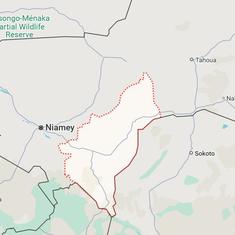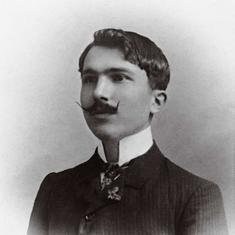Krishna Shah’s Shalimar has been around long enough to most people to forget just how mediocre it actually is. It now qualifies as a “cult film” and pop ups as a ready reference in Farah Khan’s diamond heist movie Happy New Year, which opened this week. In Happy New Year, the impregnable safe containing a stash of blue-hued precious stones is named after the 1978 movie about various robbers competing for a rare ruby named Shalimar.
Like all Khan’s movies, Happy New Year is a jumble of references to iconic characters, dialogue and moments from popular Hindi cinema, especially from the seventies and eighties. Shalimar is from the stylish seventies, a decade that pushed the Hindi film hero’s screen image into grey zones and dark shadows. Taking his place alongside the gangsters, robbers, spies and double agents of that period is Dharmendra’s pickpocket and gambler, who bluffs his way to a remote island retreat organised by an English gentleman named Sir John. Sir John has organised a hunt for the rare ruby Shalimar, which is lodged in a vault protected by booby traps and spear-wielding tribals and monitored round the clock by closed-circuit television.
That Sir John is played by the British actor Rex Harrison speaks for Shalimar’s gumption. Billed as an “Indo-US co-production”, Shalimar aimed to be nothing less than a Spielbergian exotic adventure that would launch the Indian career of its India-born American director, Krishna Shah, and make international stars of its leads, Dharmendra and Zeenat Aman.
In his book The Shalimar Adventure, veteran publicist Bunny Reuben provides a rollicking account of how the movie was made and unmade by the bravado of its backers. Shalimar is sandwiched between Orientalist jungle-themed adventures such as The Tiger of Eschnapur and Gunga Din and Indiana Jones and the Temple of Doom. Shah’s original story, writes Reuben, was titled Johannesburg Jigsaw, and was set in Jamaica.
For his Indian debut, Shah shifted his story to the fictitious Saint Dismas Island. His dream cast included Marlon Brando, Rod Steiger, Peter Ustinov and even Toshiro Mifune. Gina Lollobrigida was approached for a key female character. The Italian actor even came to India for a pre-release press conference that Rueben describes in salacious detail in a chapter called The Battle of the Boobs. Briefly, it focuses on competing displays of cleavage between the Italian and Zeenat Aman.
Lollobrigida walked out of the movie, and was replaced by Sylvia Miles, an American actor of indeterminate gender who plays an aging acrobat and wanders through the movie in a Victorian wig and low-cut gowns. John Saxon, who later appeared in another international co-production, Enter the Dragon, appears as a speech-impaired person who is later worshipped as a god by the tribal population that Sir John has under his heel.
Indiana Jones and the Temple of Doom was briefly banned in India because it stereotyped Indians as monkey-brain eaters and snake worshippers, but Shalimar’s depiction of tribals is no less ludicrous. They wear feathered head-dresses and colour co-ordinated costumes and dance around the fire singing “jhingalala hoon, jhingalala hoon, hoon hoon”. No wonder Rex Harrison sports one expression throughout the movie – that of an Englishman marooned on a tropical island and in the early stages of a rare disease for which there is no cure.
Shalimar created greater noise off the screen. When it was finally released in 1978 after several delays, the movie failed to click with Indian audiences despite the presence of Dharmendra and Zeenat Aman. It has survived in memory uncharitably as a “How not to make a co-production” and charitably as an idea ahead of its time. Although Shah’s directorial skills – he had previously made the American films Rivals and The River Niger – do not seem in evidence during Shalimar, some of that movie’s ideas have survived into the present day.
Shah’s burning desire to make an Indian-style movie that would mesmerise global audiences continues to infect producers and studios. “Five hundred films a year, so many technical facilities, well-equipped studios, good cinema halls, and yet Indian cinema is a joke in world cinema,” the director told Reuben. The feeling that Hindi cinema hasn’t got its due around the world continues to animate attempts to broaden Bollywood’s heat map. Some producers and distributors have found that the middle path approach works better: the Indian films that click with international viewers, such as The Lunchbox and English Vinglish, are the ones that move away from the song-and-dance formula and tune down the melodrama.
But why change the very stripes by which the world identifies you? The global media has reduced all of Indian cinema to the catch-all word Bollywood. Meanwhile, some Indian filmmakers mask their inferiority complex about being unintelligible to foreigners by taking refuge in insularity and poking fun at international attitudes and behaviour from the safety of their domestic perches. One of Happy New Year’s flattest jokes is about “Chinese-looking people”, whose names and accents have been the target of many Indian films. Shalimar’s “jhingalala” days aren’t likely to return, but the Chinese, rivals in economics and politics, are fair game.










